Acclaimed conceptual artist Charles Gaines came to Montgomery, Alabama, on October 17 to speak about Hanging Tree, his new work commissioned by EJI for Freedom Monument Sculpture Park. Mr. Gaines’s talk was part of an exciting program of events celebrating the opening of Elevation Convening Center and Hotel.
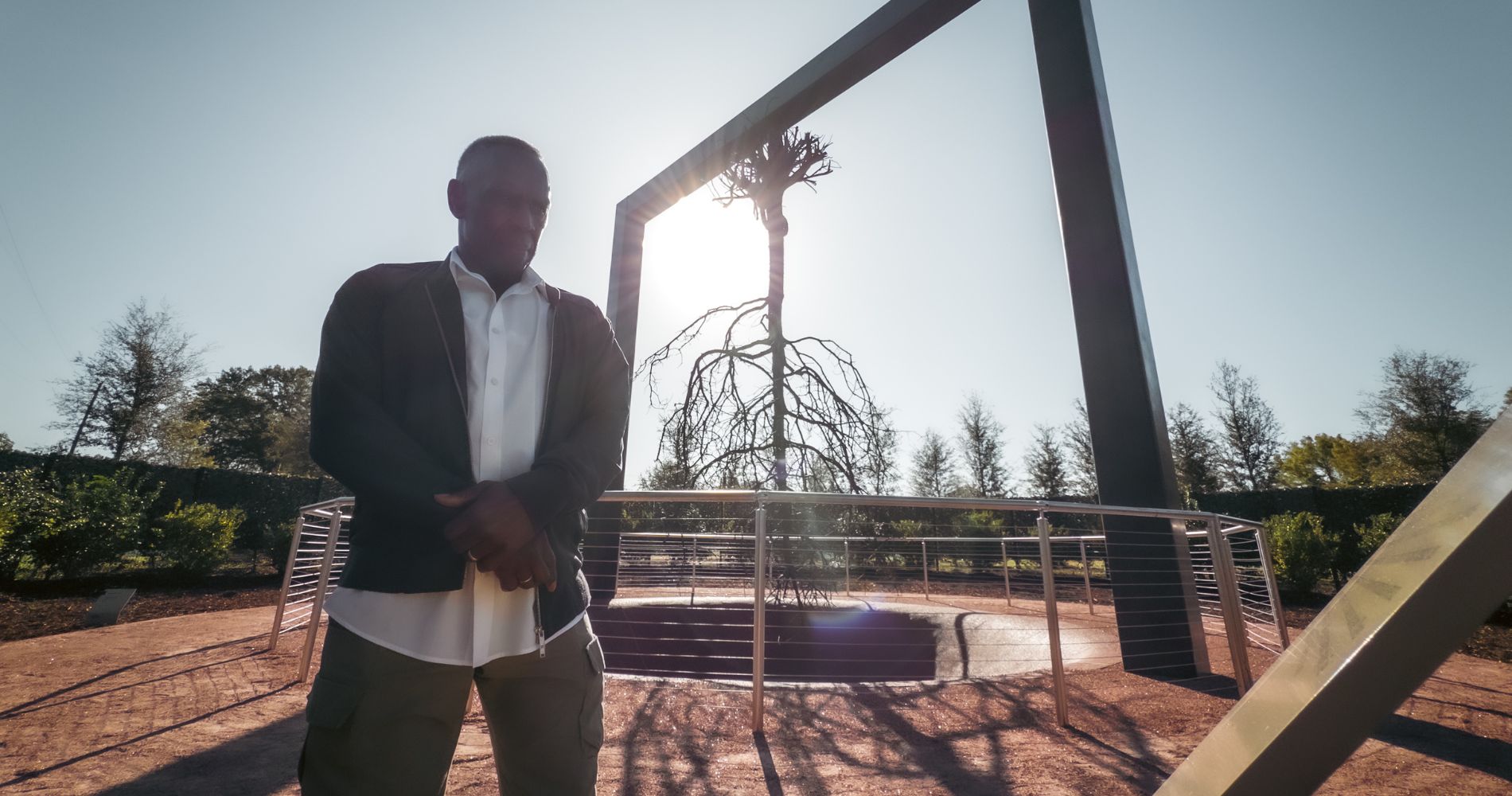
Mr. Gaines reflected on his upbringing in the Jim Crow South—remembering when his mother dragged him to the back of a bus after he tried to sit in the front and what it was like using the entrance for Black people at the Charleston Zoo—and how it inspires his work to this day.
“In Charleston [there was] this general tenor that you’re living in a place where people don’t like you. And I couldn’t understand that…I think [that] eventually helped shape what I was interested in terms of being an artist.”
Mr. Gaines’s desire to find a way out of living in a highly racialized society motivated him to use his art to “unpack ideological constructs that rule our lives.” His work has evolved as he continues to explore how best to make art that is personally meaningful.
The piece Mr. Gaines created for Freedom Monument Sculpture Park is site specific, he explained—designed to be “in correspondence with the other works in the park, and also with the general idea of the Museum.”
The “hauntingness of the space, of the environment, of this place,” Mr. Gaines said, “created this compelling idea of the importance of place.” His art draws from the power of place, he explained, because it “compels the reality of the narrative aspect of the work.”
Mr. Gaines described Hanging Tree as “a simple structure where I take a tree, turn it upside down, and hang it from a stanchion.” The tree is engineered to gently swing on a motor.
Inspired by Billie Holiday’s recording of “Strange Fruit” and the haunting history of enslavement and lynching, Hanging Tree presents visitors to the Legacy Sites with a towering visual that conveys the weight and horror of our nation’s history. Hanging Tree is cast entirely in bronze and is suspended more than 25 feet high at Freedom Monument Sculpture Park.
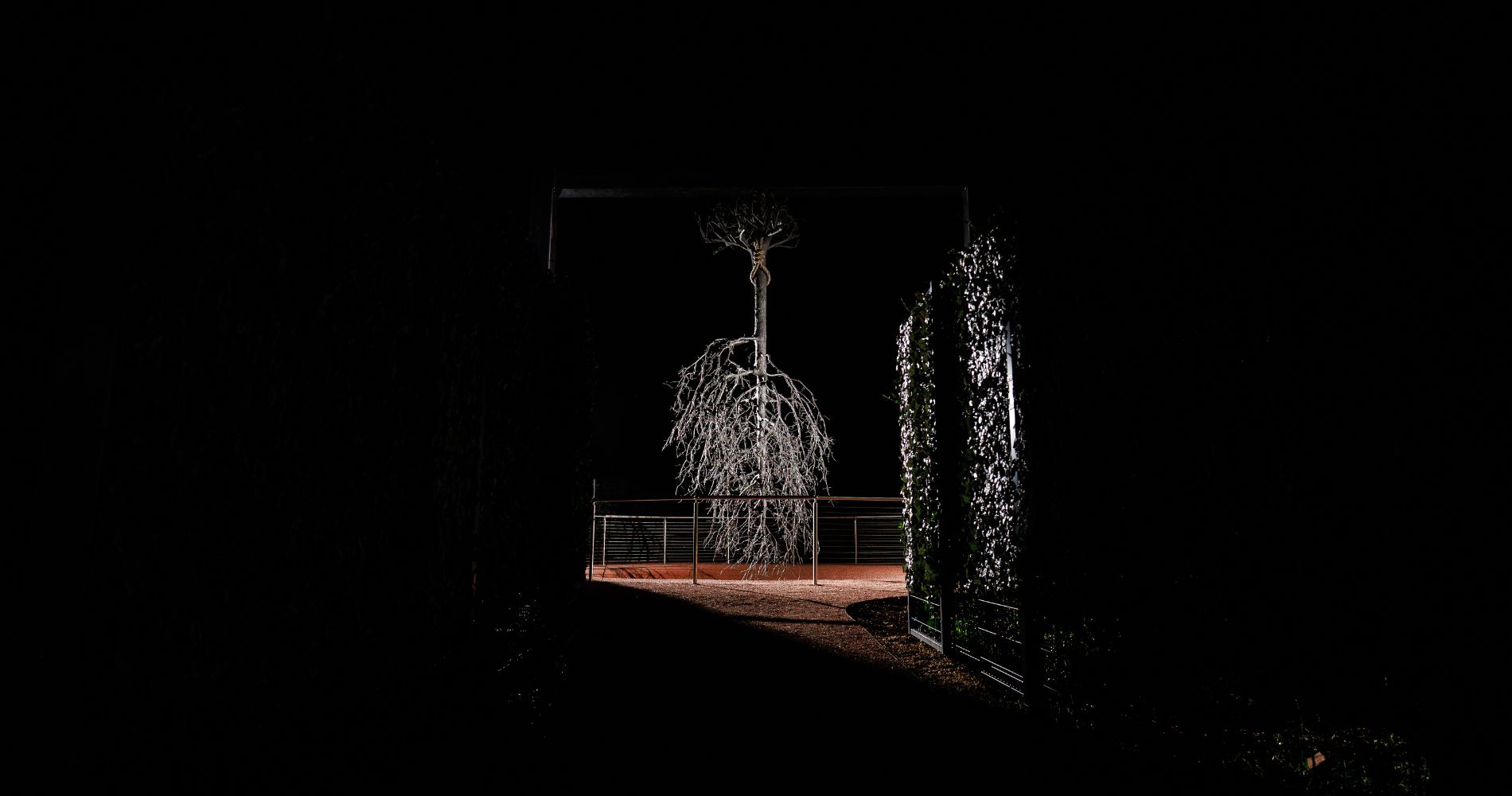
Mr. Gaines spoke about the power of EJI’s Legacy Sites and the sense of pride he feels to have his work in Montgomery. Questions about the structure and existence of racial hierarchy and bigotry have been on his mind his whole life, he said. “And it always struck me, even at a young age, why this structure existed. Why was there a social and civic environment that separated people according to skin color and privileged the white people over Black?”
Visiting the Legacy Sites, he said, provided some answers to his lifelong questions.
“Coming to this place,” Mr. Gaines said, “was the first real palpable expression of answers to all these questions I had my whole life. And not only that, those answers were triumphant.”
Mr. Gaines’s Hanging Tree is now open at Freedom Monument Sculpture Park.
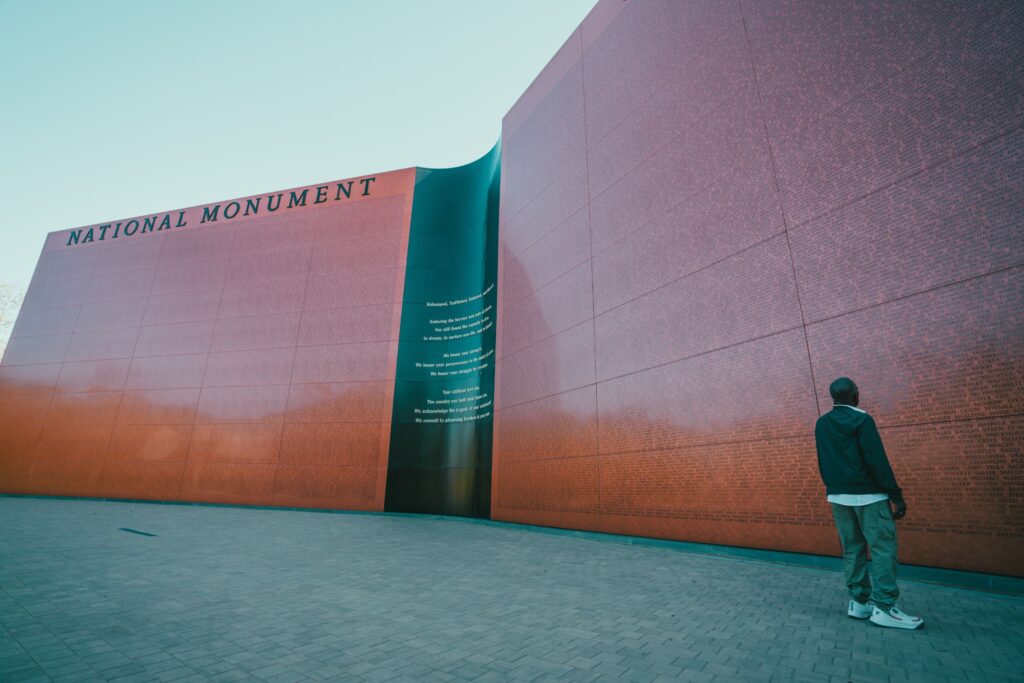
/

/
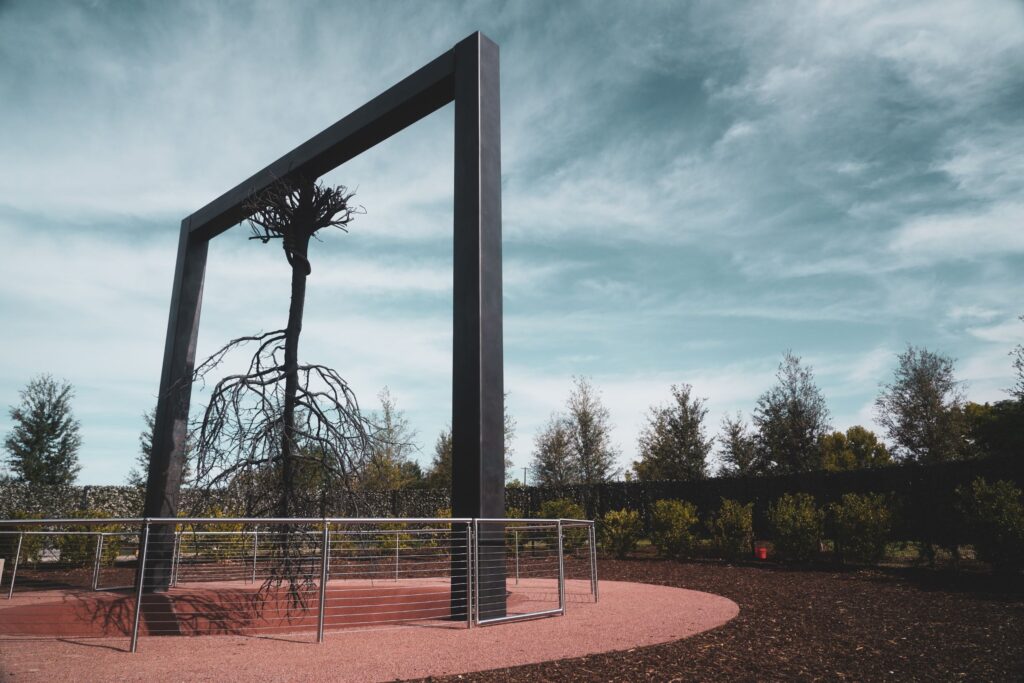
/
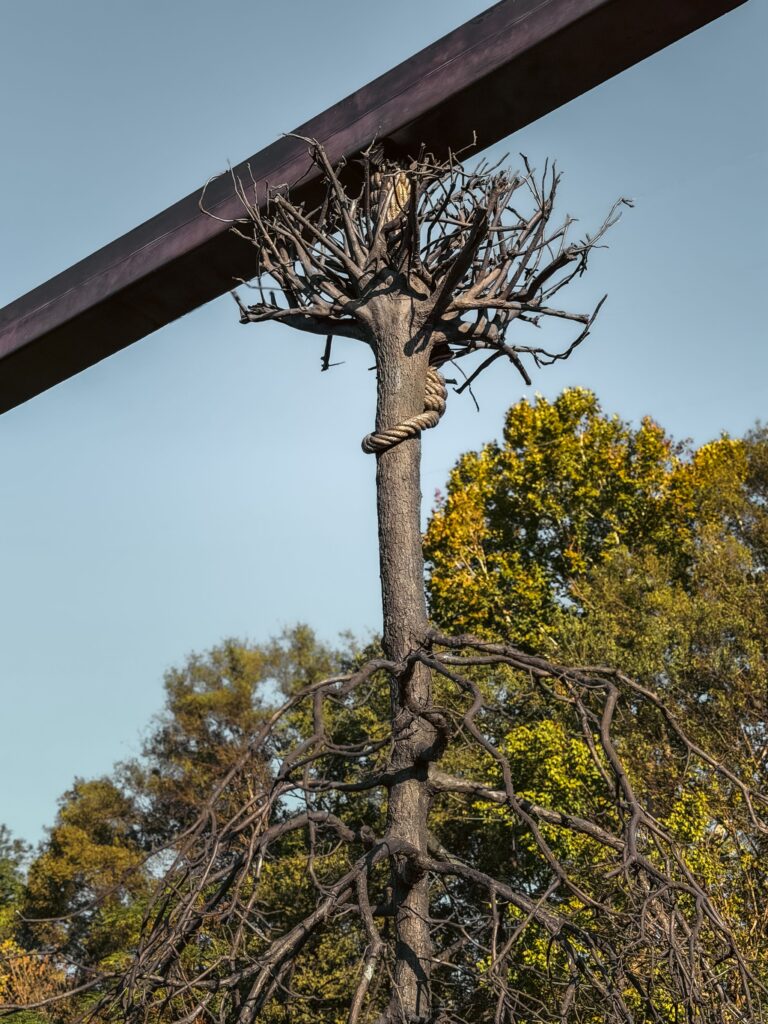
/